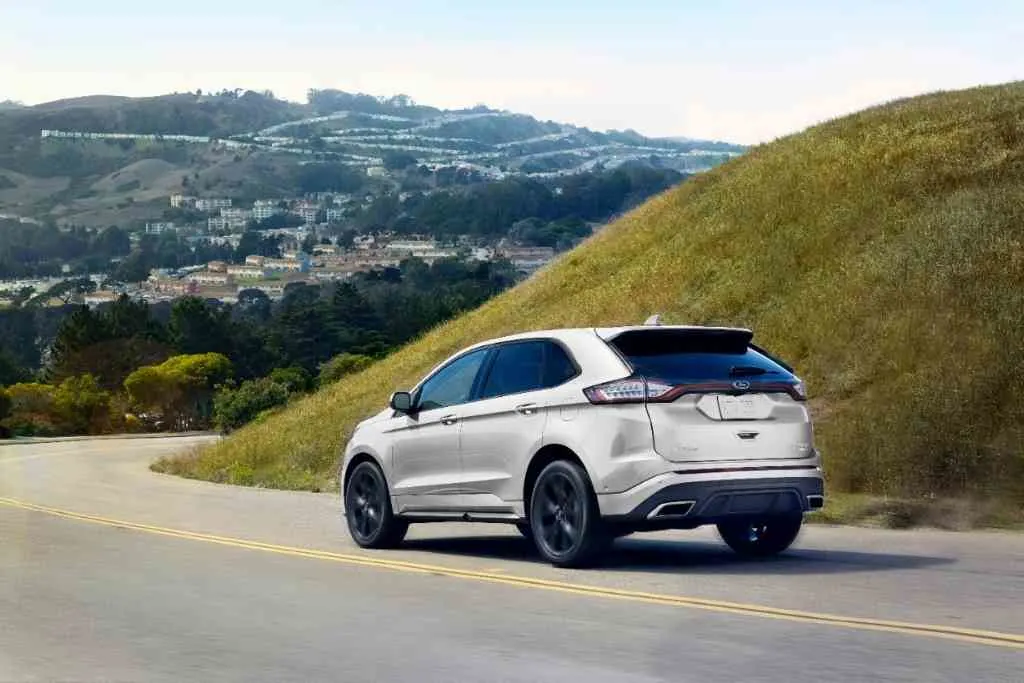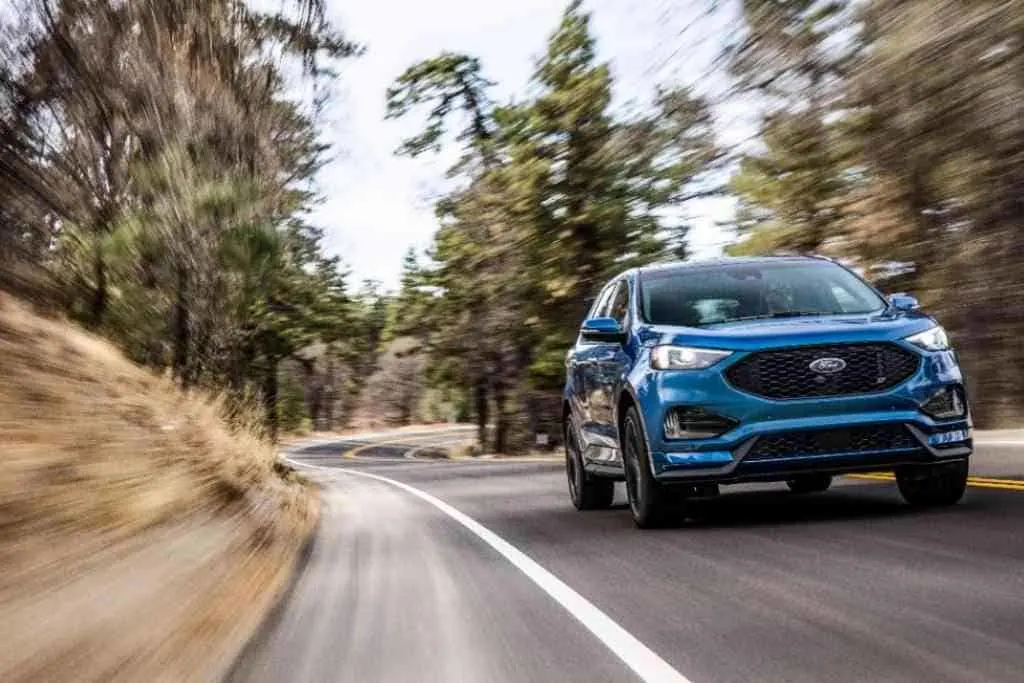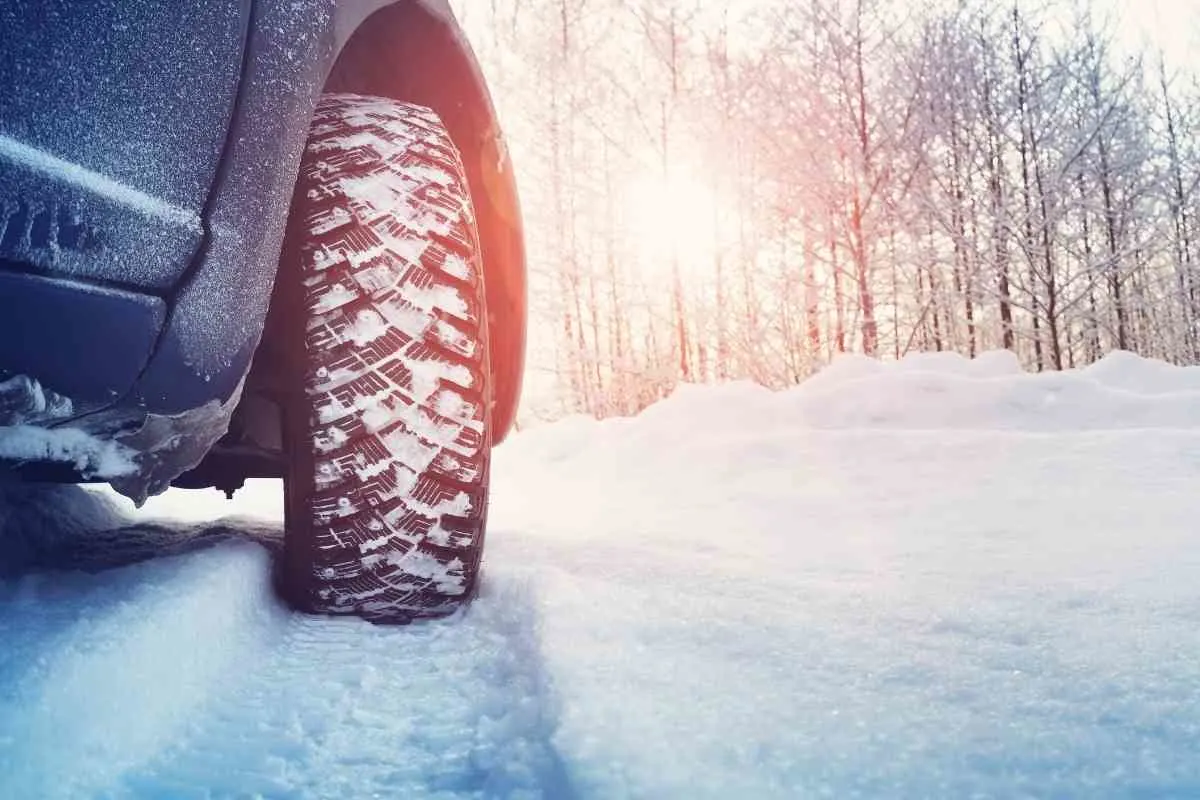Snow and icy, winter conditions are some of the most dangerous and harrowing situations average drivers will encounter.
If you live in an area that gets hit hard by winter storms, selecting the right vehicle is literally a matter of life and death.
If you’re considering the Ford Edge, you’ve likely heard about its stylish design, spacious interior, and a whole bunch of other features. But how does the Ford Edge handle the snow?
Is the Ford Edge Good in Snow?
The Ford Edge is one of the best vehicles in its class in snow and winter conditions, especially the AWD model. Unless you get some additional options, the Edge is not specifically designed for snow and will therefore perform fine in light snow but it’s certainly not a winter sports mobile.
Since everyone’s winter driving needs will vary greatly depending on where in the world they are driving and what their hauling needs are, it’s important to get a well-rounded understanding of all of the winterizing features that the Ford Edge has to offer.
This article will discuss whether or not the Ford Edge is good in snow, how much snow a Ford Edge can handle, and built-in features that enhance winter performance. Let’s get started.
How Much Snow Can a Ford Edge Handle?
Once you get to heavier accumulations (e.g. more than 1-2 inches) or very cold and icy conditions (e.g. below -10F), the standard Edge will be outperformed by other vehicles that are specifically designed for winter driving.
Such vehicles include the all-wheel drive and four-wheel drive options, or models with winter tires equipped.
For example, in a test, a Ford Edge without summer or winter tires was not able to gain traction on a -6F day with smooth ice.
However, in this test, the Edge was able to get up the same hill on fresh snowfall.
It can get stuck in heavy snow if low-traction surfaces are combined with high winds or deep snow that was already on the ground for a while.
However, it does have an all-wheel-drive option, which makes it a good car for driving in light snow or just on wet roads.
The Edge’s standard all-wheel drive, called Intelligent All-Wheel Drive, continuously monitors acceleration, deceleration, and cornering Gs.
It also monitors wheel slip to send power to the wheels with the best grip. This helps give it good maneuverability in bad weather conditions.
The Edge also has an efficient system of tire chains. It also has heated side mirrors, a rear window wiper de-icer, and heated front seats.
All these allow for safe travel through snow-covered roads.
Despite having standard AWD, the Edge is not considered an SUV.
An SUV is usually larger and has considerable ground clearance.
SUVs are better at climbing hills or clearing obstacles and parking spaces.
Some SUV models (e.g. Ford Explorer and Chevy Traverse) can clear up to 2 feet of snow with the proper equipment.
This is double what the Edge can handle but far less than most SUVs on the market today (up to 4-5 feet).
If possible, it is essential that during blizzards and snowstorms, you pack a set of chains and make your escape as soon as possible.
The 2013-15 model year edge has a towing capacity of around 3,500 lbs. putting it well above the average mid/full-sized car.
That means you should be able to tow another vehicle if your winter commute requires that, or take your motorcycle or other accessories with you on a snow day.

Built-in Ford Edge Features That Enhance Snow Performance
1. Snow tires
All-season or winter tires provide better traction on road surfaces with small amounts of snow/ice. They are an excellent safety precaution.
If there is too much snow on the road, all-season tires will not provide a reliable grip on the road and may result in loss of control.
2. Heated side mirrors
When winter strikes, the side view is obstructed by snow or ice buildup from passing cars.
Heated mirrors help melt accumulated snow from your car’s exterior.
3. Rear wiper de-icer
If you have a rear wiper, be sure it has been cleared of snow and is ready for use before leaving your car.
Frozen wipers can make visibility nearly impossible!
4. Heated seats
The front seats provide heat to keep your backside warm throughout winter trips. Heated front seats can help defrost windows in the winter and reduce fog in the summer.
5. Built for Winter Driving
Ford invests in design and engineering to make sure every vehicle is up to any challenge, including winter driving conditions.
Whether you have a front-wheel-drive or all-wheel-drive model, the Edge was designed from the ground up to deliver optimal traction.
The Edge’s Auto-Start-Stop technology allows for better grip on slippery surfaces, even when the engine is off.
This means you can stop and start without any fuel wasted idling in place.
6. Enhanced Traction
Available Intelligent All-Wheel Drive with Dynamic Torque Vectoring is the only system that senses when wheels are slipping.
It then automatically applies torque to individual wheels until grip returns. That’s perfect for cornering on snowy roads.
The Edge also offers available Auto-Reverse Parallel Parking on vehicles with Intelligent Access.
That means you can parallel park in tight spaces without having to shift your vehicle into reverse.
7. Best-Handling in its Class
The Edge has one of the best weight ratios in its class – nearly 50/50. This means it doesn’t favor front or rear-seat passengers.
But, it ensures you have plenty of power to get yourself out of any tight spot.
The Flat Cornering Technology allows the tires to remain perpendicular with the road while turning, resulting in a perfectly flat corner for better grip and handling on the road.
Tips for Improving Ford Edge Winter Performance

Here are five tips for improving your Ford Edge winter performance;
1. Get All-Weather or Winter Tires
The first thing you will want to do is make sure your Edge has a good set of all-season tires.
Winter conditions can be tricky, and there’s no need to risk it with subpar tires.
It’s also worth mentioning that if you have summer or all-season performance tires, they probably won’t perform as well in the snow.
2. Get the AWD/4WD Model
If the features on my Ford Edge are any indication, getting an AWD/4WD vehicle will not only give you better traction, but it’ll also help improve your fuel economy.
However, AWD/4WD does come with a significant price increase if you’re looking for the base model (like the one I drive).
But besides that little hiccup, AWD or 4WD vehicles are well worth the price.
3. Carry Snow Chains
Many people neglect this because it adds an extra step to the process of getting out there on the road.
But having snow chains or cables could be your saving grace if you get stuck.
Not only will they help improve traction, but they’re also relatively easy to install.
This way, you can get back on the road in no time.
4. Turn Off the Traction Control if It’s Not Needed (Especially in Awd Vehicles)
If you have the all-wheel-drive version of the car, you probably won’t need to turn off the traction control.
The reason for this is because it’s designed specifically to help give you a better grip in snowy conditions.
However, if your Edge doesn’t have an AWD model, you’ll definitely want to make sure that this feature is turned off.
The reason for this is because it can actually cause more problems than solutions; especially if you are driving on dry pavement.
If the traction control isn’t necessary, then feel free to turn it off so that you have better speed and control of your vehicle.
5. Slow It Down
This goes for any vehicle, but especially during winter! When conditions are bad it’s important that all drivers slow down.
Not only will driving at or under the speed limit give you more time to stop if something goes wrong, but it could also save you from sliding off the road.
If your AWD/4WD vehicle temporarily loses traction, slowing down will make it easier for the wheels to regain grip.
Ford Edge Winter Performance Compared to Other Cars in Its Class
The Ford Edge has an excellent safety rating for handling winter weather conditions.
It has several features that help make it easy for drivers, such as heated steering wheels and heated seats.
This makes it a great choice for people who live in snowy areas and who need a vehicle that can make the commute safely to and from work.
The Ford Edge is one of the best cars in its class, along with others such as the Chevy Equinox, Hyundai Santa Fe, Kia Sorento, and Nissan Murano.
Ready For The Winter?
Whether you’re commuting to the office, driving kids to school, or taking clients out for business lunches, when roads get slick it’s easy for any vehicle to lose its grip.
Using the right all-season tire can help but wouldn’t you like more? The Edge offers drivers a variety of features that make it the best-handling Edge in its class.
FAQ
Does the Ford Edge have AWD or 4WD?
The Ford Edge is available in an all-wheel-drive format where it can be classified as a “crossover” vehicle.
But only some models are available with the ability to add a low-range transfer case.
Although not necessary for normal snow conditions, the all-wheel-drive/AWD model has been found to give drivers more control and stability when going up hills or through deep snowbanks.
